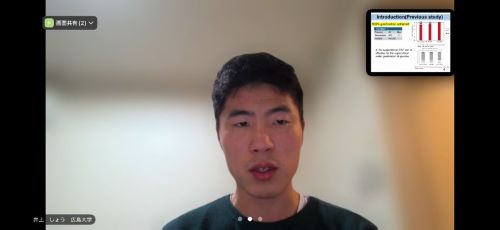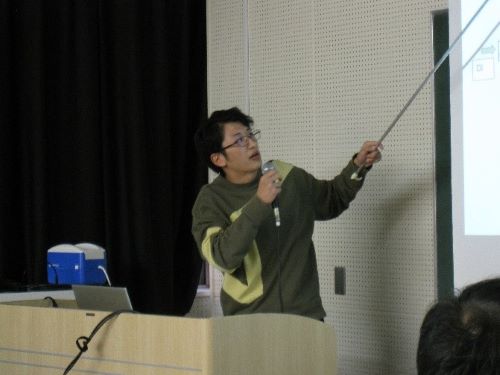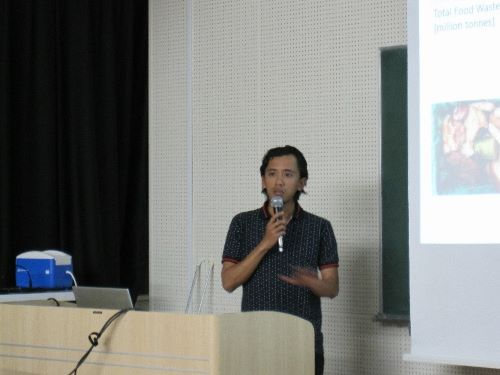HOSTY Association (Graduate School of Advanced Science and Engineering)
Email: bprc*hiroshima-u.ac.jp (Please replace*with @)
Date & Time: October 29,2025
Program
Commentary: Yukihiko MATSUMURA
Professor, Graduate School of Advanced Science and Engineering, Hiroshima University

Lecture: Sho Inoue
B1, School of Engineering, Hiroshima University
“Effect of Ru/CNT Catalyst on Supercritical Water Gasification of Acetic Acid”
Supercritical water gasification is a technology that enables the efficient and complete conversion of wet biomass. However, for complete gasification, recalcitrant organics such as acetic acid must be decomposed. To facilitate complete gasification, catalysts are often added. Recently, a ruthenium catalyst supporting carbon nanotubes (Ru/CNT) was found to be effective in the supercritical water gasification of glucose. However, its effectiveness on acetic acid has not been confirmed. In this study, Ru/CNT catalyst was employed for the supercritical water gasification of acetic acid, and its effectiveness was elucidated experimentally.

Lecture: ZIHAO HE
D1, Graduate School of Advanced Science and Engineering, Hiroshima University
“Sustainable recovery of phosphorus in supercritical water gasification”
Supercritical water gasification (SCWG) can directly convert sewage sludge to high-value gas without a pre-dewatering process, which can save a lot of energy. The world is facing critical challenges from global warming and the depletion of fossil fuel reserves. Meanwhile, phosphorus, as a non-renewable resource, is also a major challenge. Especially in Japan, there are no phosphorus resources, making its scarcity a growing global concern. As phosphorus is essential for both industrial processes and agriculture, the declining availability and quality of phosphate rock, coupled with rising prices, underscores the urgent need to identify alternative sources for producing phosphate fertilizers to support sustainable agricultural practices. This study proposes a recovery system for phosphorus recovery during SCWG. Under supercritical conditions, we attempted to use calcium hydroxide to assist in the precipitation of phosphorus as the solid particles. Therefore, gravity separation was explored as a potential technology. The purpose of this study is to design and fabricate a separation device and experimentally evaluate its performance.

Lecture: DAOLIN HU
M2, Graduate School of Advanced Science and Engineering, Hiroshima University
“Hydrothermal Carbonization of Xylose”
Xylose is a key precursor in hydrothermal carbonization, during which furfural is formed as an essential byproduct. Tinhd et al. investigated the yield of furfural at temperatures ranging from 160°C to 200°C. They found that the furfural yield peaked at 180°C and proposed a reaction pathway. However, they did not further discuss the changes beyond 200°C. Exploring the behavior of furfural at different temperatures can thus provide a better understanding of the hydrochar formation process.The objective of this study is to investigate the reaction characteristics of hydrothermal carbonization of xylose

Lecture: ROBBANI, Muhammad Haqqiyuddin
D1, Graduate School of Advanced Science and Engineering, Hiroshima University
“Hydrothermal carbonization of starch: effect of feedstock concentration on the reaction behavior”
In recent years, food waste has become one of the biggest global issues due to its properties, such as its high moisture content and perishability. Meanwhile, hydrothermal carbonization is a simple process that does not require drying or additional chemicals, making it highly suitable for processing high-moisture feedstock. This study aims to investigate how feedstock concentration affects the behavior of the hydrothermal carbonization reaction. Experiments were conducted using a batch reactor with varying feedstock concentrations (0.05–0.3 kg/kg) and reaction times (0–6 hours) at 200 °C.

Chair: Yukihiko MATSUMURA
Professor, Graduate School of Advanced Science and Engineering, Hiroshima University

 Home
Home



